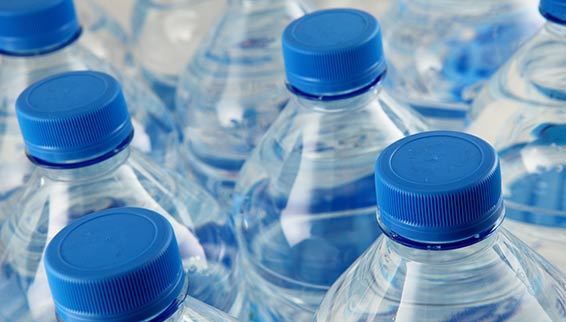Combined effects of chemicals
Chemicals are all around us but what happens to our health or the environment when the effects of individual substances are combined?

Chemistry is a fundamental part of life and our existence. Recently, along with technological developments and evolution we are exposed to increasing amounts of both man-made and natural chemicals from a variety of sources such as food, water, medicines, air, cosmetics, health care products, clothing and other consumer products. Not only are we exposed to them but the environment and wildlife are too.
Combined effects of chemicals occur in three different situations:
- A product that we use can be a mixture of different chemicals - exposing us and the environment to all of them, at the same time.
- We can be exposed to a single chemical coming from different sources. This can result in a larger exposure over time for us and the environment.
- Different chemicals from different sources released at different times and from different places can expose us or the environment. In some cases, exposure to different chemicals may lead to effects that are more severe than for exposure to the individual chemicals.
The hazards and risks of chemicals are currently assesed substance by substance. The EU limits the amount of chemicals allowed in the products we buy, the air we breathe and in our food and water. Concerns still remain that analysing individual chemicals alone does not provide sufficient security and that the combination effects of chemicals should be addressed in a more systematic way.
For the time being, there is no EU-wide system in place to assess the combination effects and risks of chemicals. There have been developments in this area and scientists are looking into ways in which groups of chemicals that have a wide exposure for us and the environment, can undergo combined risk assessment. It is very difficult, if not impossible to test all mixtures using standard experiments. Better testing strategies and the use of novel alternative testing methods using computational modelling and non-animal methods, need to be used.
The European Commission is working to identify mixtures that need to be assessed as a priority, not substance by substance but as a whole and in combination with other mixtures. Scientists and regulators are also finding new ways to fill information gaps to better understand those mixtures that we are exposed to.
ECHA follows the developments in this area and works with industry, academia and international organisations to analyse the need for combined hazard and risk assessment for chemicals in the European market and when a need is identified, ECHA also acts on risks from combined effects. Follow the links below to see examples of these actions.
Read more
- Proposal to restrict four phthalates
- Combination effects of chemicals - European Commission
- Video on the combined effects of chemicals on food - European Food Safety Authority
Read Also
-
 general
generalBisphenol A
Bisphenol A (BPA) has been on the market since the 60s. It is used in a wide range of consumer products such as plastic bottles and receipts. Due to its hazardous properties, BPA has already been restricted in several products in the EU.
READ MORE -
 Products
ProductsChemicals in plastic products
Plastic makes our lives easier in many ways, but some plastic products contain chemicals that can harm our health – such as bisphenol A or some phthalates.
READ MORE
